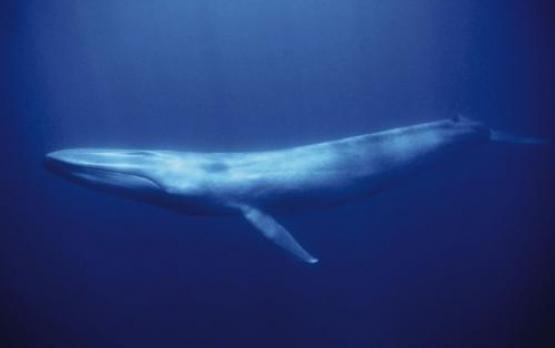Balaenoptera musculus: The Animal With a Heart the Size of a Car
October 9, 2012
By Mera McGrew
Blue whales, which are listed as endangered on the International Conservation Union (IUCN) Red List, are the gentle giants of the ocean.
Scientifically knows as Balaenoptera musculus, they are the largest animals known to have ever lived on Earth. At birth, a calf can measure about 23 feet (7 meters) in length. Fully grown, they can reach up to 108 feet (33 meters) and weigh upwards of 200 tons (181 metric tons). Reaching sizes comparable to a Boeing 737—and with hearts that weigh as much as a Volkswagen Beetle—the blue whale is even larger than the biggest dinosaurs that roamed the Earth during the Mesozoic and Paleozoic eras.
These giant marine mammals reach such massive sizes by eating tiny shrimp-like animals known as krill (euphausiids). According to published reports, a single adult can ingest up to 4 tons of krill per day. Pleated grooves in their throats expand during feeding to allow large volumes of water and food to be taken in. As the animal closes its mouth, water is expelled through baleen plates, a filtering structure made up of the same protein that makes up our hair and fingernails (keratin). The baleen plates hang from the whale’s upper jaw and act as a strainer that lets the water out while keeping the food in.
These graceful giants inhabit sub-polar to sub-tropical latitudes and are known to be mostly solitary animals or to occur in small groups of two or three. However, in some occurrences, researchers have reported that groups of up to 60 may form in areas of high food abundance.
In addition to being recognized as the world’s largest animal, blue whales are also known to live extremely long lives. Similar to dendrochronology, the science of counting tree rings to determine tree age, scientists have discovered that by counting the layers of a deceased whale’s wax-like earplugs, they can estimate the animal’s age. While the average lifespan of a blue whale is around 80 to 90 years, much of their life history still remains a mystery.
By virtue of their extreme size, researchers do know that blue whales have virtually no natural predators. However, in the 20th century they were nearly hunted to extinction by commercial whaling. International protection in 1966 helped to prevent the extinction of the species altogether. Today, reports on the size of the current population vary, but some published findings suggest that as few as 5,000 blue whales remain worldwide.
Mission Blue hit the streets of New York City to ask people if they knew that the blue whale was the largest animal on Earth. To find out what happened watch below.
top photo: creative commons Attribution-ShareAlike








